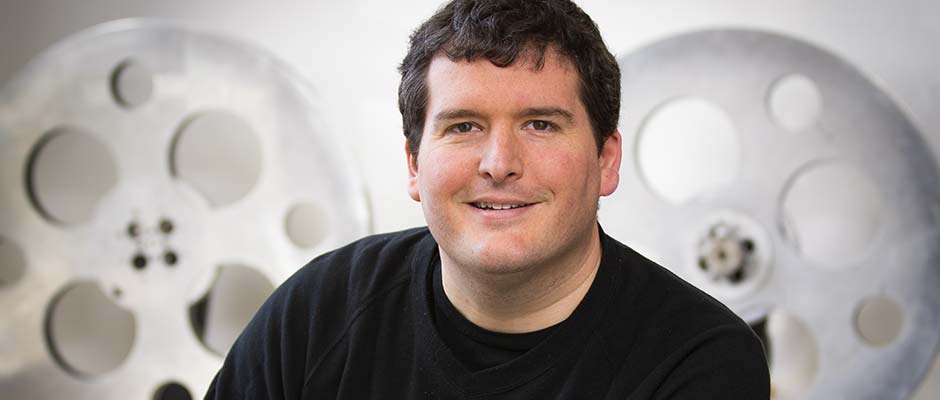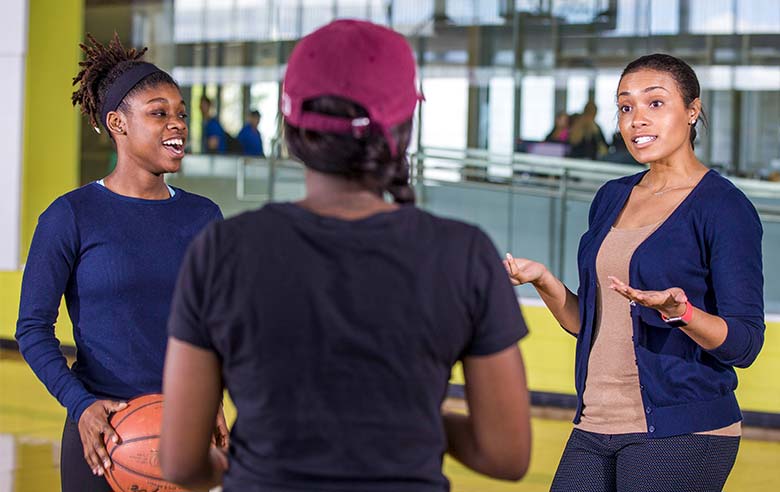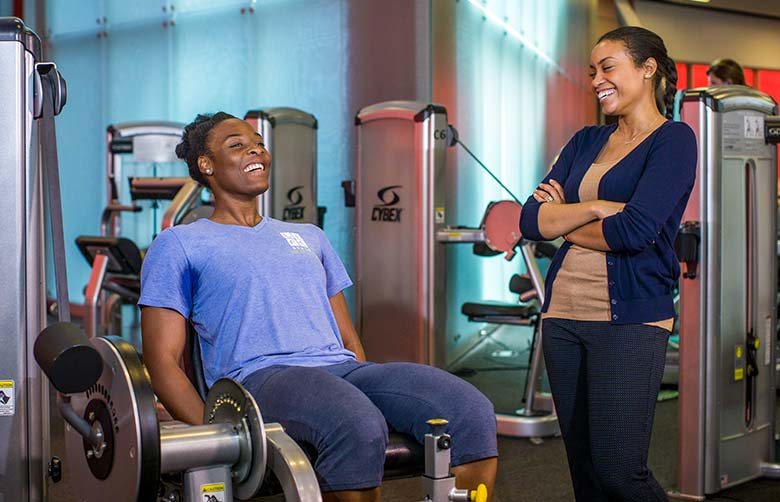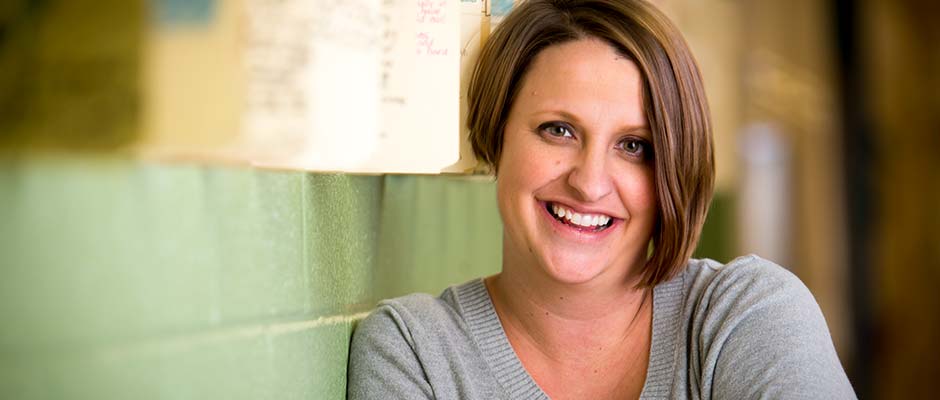Archive for July, 2016

A working writer
The pitch was going well; the executive was laughing and taking notes. But then she asked an unexpected question. Could he change the gender of one of the lead characters? A female lead would be more inclusive of the network’s demographics and provide a vehicle for one of its rising stars.
Amberg remembers that it wasn’t as simple as saying ‘yes.’ He had to quickly run through the plot, scanning for the “ripples that come from tossing that rock in that pond. I knew the story so well that I was able to do that in the moment. The fact that I was able to answer authoritatively about the specifics of how I’d adjust the story gave her the confidence to buy the project in the room.”
With that sale, Amberg earned membership in the Writers Guild of America, a life-changing milestone that resulted in larger contracts and meaningful benefits. The experience also affirmed an essential principle: that flexibility is the foundation of life as a working screenwriter.
Now, as the coordinator of Missouri State’s screenwriting programs in the department of media, journalism and film, Amberg helps emerging writers develop their skills and learn to navigate the industry.
Amberg’s creative activities keep his knowledge sharp. Since joining Missouri State in 2013, he has completed contracts with Disney Channel and Cartoon Network. He makes regular trips to Los Angeles, where he meets with contacts at film, TV and Web entertainment companies, including Nickelodeon, Amazon and Awesomeness TV. His work has been recognized with a number of awards, including Best of Competition in Faculty Scriptwriting at the Broadcast Education Association Festival of Media Arts.
Lessons from the industry
Amberg is straightforward with students about the industry’s unpredictability. Companies’ mandates shift; executives get reshuffled; different personalities respond to different types of material. And these all affect whether a writer’s work gets produced.
But Amberg also focuses on the constants, like the importance of developing a strong work ethic, mastering the fundamentals of story and – most importantly – understanding the writing process.
“I don’t want anyone to be in a situation where they find themselves staring at a blank screen,” he says. “I want them to know how to tell a character-based story that is held together by the tools of writing, not dependent on one idea. And if they get some great, awesome idea, they will be able to execute it. And if they get hired onto a project, they’ll know how to deliver the best version of someone else’s idea.”
Amberg also encourages humility and perspective. “Everyone in this business is working hard, and no one came to Los Angeles with the goal of making someone else’s dream come true. It’s important to be kind to other people and assume that everyone’s doing their best. And when the planets align and a project works, it’s great.”
Amberg often shares with students that when he first started out, he believed compliments indicated a meeting was going well. As he gained experience, he learned that questions, not compliments, are the true sign of a project that’s resonating. “When people are really interested in something, they want you to make changes,” he says.
This dynamic can feel bruising to creatives, who are sometimes considered overly protective of their work, and Amberg empathizes. “Screenwriting is unlike many other kinds of writing, where the writer is king,” he says. “But it’s important to remember that the executives you work with are smart, creative people, too. They’re tasked with thinking strategically about multi-million dollar projects. And their changes aren’t arbitrary; they just have more information about what they need.”
According to Amberg, the ability to collaborate and create a production-ready script is essential, not only for career success but for the strength of the story.
“You love your script,” he explains. “So you change it and adapt it to survive in the market – the same way you’d raise a child to survive in the world.”

Fighting the past for a more active future
To Perkins, this wasn’t a surprise. She has spent much of her career analyzing underrepresented populations, such as African Americans and the elderly, in the areas of exercise and sports psychology.
“African American women are one of the least active segments of the population,” Perkins said. “In Springfield and on campus, we have a small African American population, so I want to know if they exercise, if they use the recreational facilities on campus and their perceptions about exercise and campus climate.”
Her experience at the Rec Center inspired her to begin researching exercise trends among female African American students at Missouri State with the ultimate goal of developing a new physical activity program designed to revolutionize exercise trends at Missouri State.

Photo by Jesse Scheve
Researching the underrepresented
Perkins’ research into minority groups indicates that a population’s overall trend of activity exists due to a complex variety of external factors – such as community, education and environment – as well as internal factors. Her research into these factors helps her to understand the best methods for improving exercise trends for different groups of people.
“In kinesiology, we prescribe exercise just like a doctor proscribes medicine.”
“In kinesiology, we prescribe exercise just like a doctor proscribes medicine. Not everyone should be doing the exact same workout. The same strategies don’t work for everyone,” she said.
In the past, Perkins has investigated several possibilities that may explain why African American women are less active.
For instance, her research has shown that African Americans in general may have less opportunity for participating in sports and other physical activities that are primarily offered in white communities. This lack of opportunity for activity early on in life can lead to lifelong habits that require extra help and effort to change.
“Everyone deserves help,” Perkins said. “Groups of people that are not represented in research are unlikely to be getting that help.”

Photo by Jesse Scheve
Encouraging exercise to prevent disease
As a researcher, Perkins’ goal is to understand these psychological and social factors about physical activity, but she doesn’t stop there – her goal is also to change the statistics by breaking through the barriers with targeted interventions to help these women get out and get active.
According to the U.S. Department of Health and Human Services, in 2011, African American women were 80% more likely to be obese than non-Hispanic white women.
According to Perkins, the importance of exercise can’t be overstated. She said a lack of physical activity can negatively affect a person’s health and lifespan in many ways, and it is troubling that an entire demographic group is at risk for insufficient physical activity.
“Exercise can prevent chronic disease, which is a fact a lot of people just aren’t aware of,” Perkins said. “I want to figure out what psychological factors influence sedentary behavior and what social or cultural factors lead to African Americans being less physically active and having a higher incidence of obesity and chronic diseases.”
Empowering a diverse campus to meet the needs of every individual
After collecting preliminary data about physical activities among female African American students, Perkins received a small cultural diversity grant from the Association of Applied Sport Psychology to further develop the study. She conducted focus groups to learn more about the perceived barriers to a workout regime, and most prominently she heard “lack of time” and “lack of motivation.” In her initial analysis of the responses, though, she also uncovered some findings more unique to the demographic, like difficulties with dealing with hair post workout and feeling socially isolated.
She hopes that by providing opportunities for some of the students most likely to have experienced obstacles to physical activity, she can contribute to a campus environment that is not just healthier, but also more inclusive of its diverse population so every individual can be empowered to meet his or her needs.
“I ask them: In a perfect world, what would an exercise program look like for you? Ultimately my goal is to help get students moving. I want to get them now in college so they’ll continue to be active as adults after they graduate,” she said. “If I can figure out what barriers prevent them from exercise, I can help them find a program they can stick with so that they can live healthier lives. It’s about finding what best fits the needs of the people you work with.”

Rethinking education: How to engage students who have special needs
“Research shows that 20 percent of students have these disorders throughout their childhood. A lot of those things that go untreated and unhelped get worse as students get older,” said Adamson, an assistant professor of counseling, leadership and special education at Missouri State University. “It tends to be a high need.”
So she wondered about the possibilities. What if teachers knew how to better identify and help such students? What if those students knew how to seek help for themselves? And how might that bring about a better future for tomorrow’s leaders?
Identifying the problem
Adamson is working with local public schools to help a small section of students who struggle with following through on classroom engagement and aren’t learning at the same rate as their peers. Specifically, she wants to know what systems, supports, and interventions can be placed in schools to support teacher training and student outcomes.
Such students may have educational behavioral disorders, which differs from medical behavioral disorders. The question is whether the disorder affects performance in the classroom.
“It isn’t because they aren’t capable,” Adamson said. “It’s because they aren’t able to sit in class and sustain until the class ends.”
What happens then, Adamson explained, is a cyclical issue in which entire classes fall behind as teachers reteach the same content to try to catch those students up.
Using a single case design, her research focuses on like groups of students to find direct relationships between interventions and how teachers’ and students’ behaviors change on days when data are collected.
Getting teachers to think like movie stars
However, the answer doesn’t lie in addressing behavioral concerns with the students alone, Adamson noted. Focus on adjusting the behavior of the teachers from an entertainment angle, and better engagement will follow.
“We know the key to students being successful is having dynamic teachers,” she said. “The biggest impact on students staying in school and having good outcomes is school engagement, which comes from making a connection with the school.
“As teachers, we’d better be the best actors there are. Every day that we’re teaching a class, we’re putting on a performance. We’re trying to draw students in as the crowd so they walk away, remember the lesson, and want to tell everybody about it.”
Behavior management is also the top reason teachers leave the profession, Adamson said, noting that training the teachers and getting students to become engaged could change a child’s trajectory.
“Kids who have emotional and behavioral disorders have worse post-secondary outcomes such as not going to college, not getting jobs and going to prison,” she said. “They’re starting out on this horrible track. It’s our job to find out what we can do to help improve this process for them.”
“I think as a nation, we need to support students who have mental illnesses and people who have mental health issues in general. Those kids who have behavioral disorders really struggle understanding the context of school because it’s so different from their lives and environments they’ve been in.” — Reesha Adamson
The long-term benefits
Starting students on a better track also includes helping them manage their mental health care as adults. This is key as children reach 16 years of age and may think they don’t need help anymore.
“People stop receiving services because they look around the waiting room and say, ‘I don’t look like that person over there. I don’t need this help,’” she said. “So we have this falling out when they stop losing this care. Our goal is to get them to continue that care to give them strategies for success after high school.”

